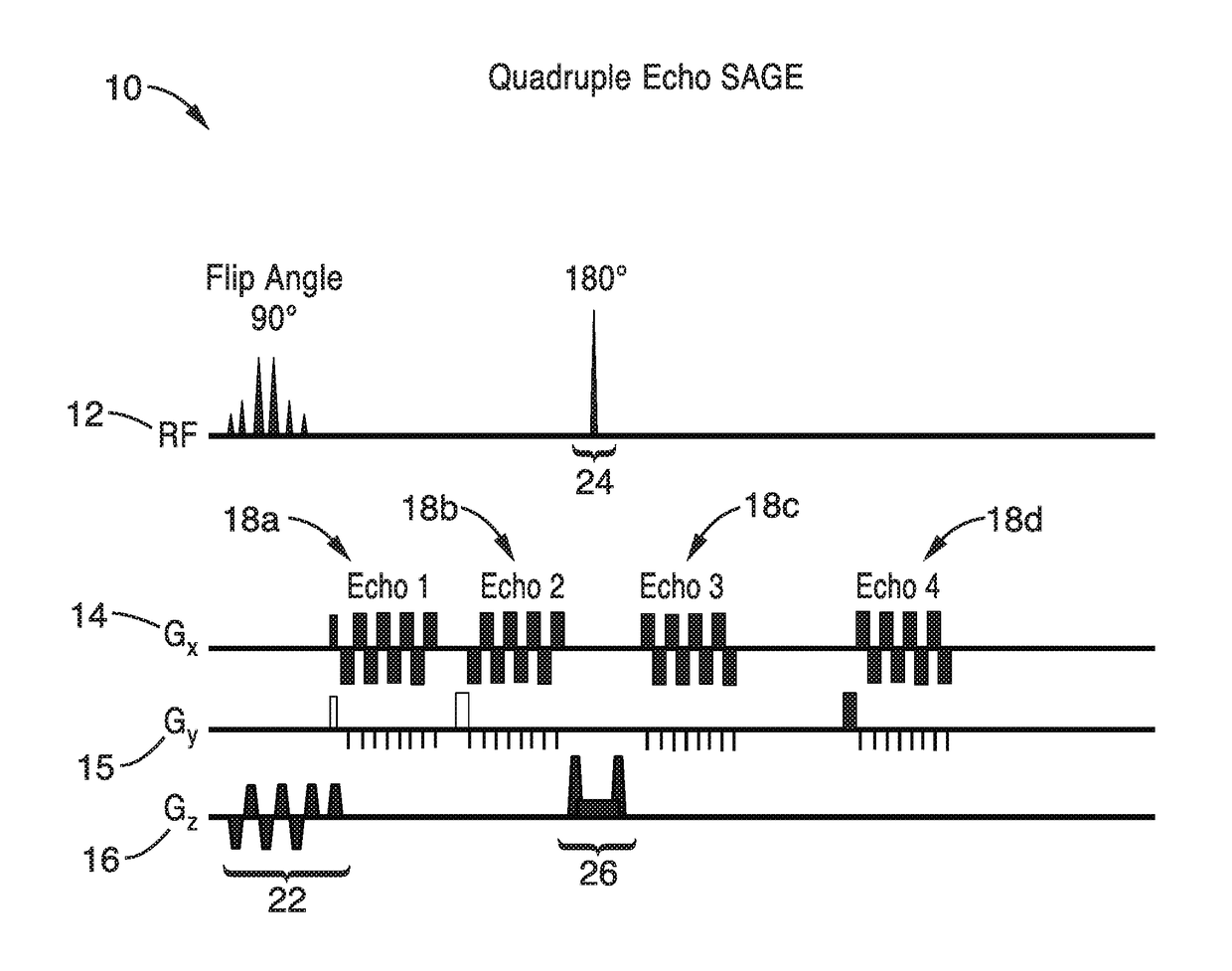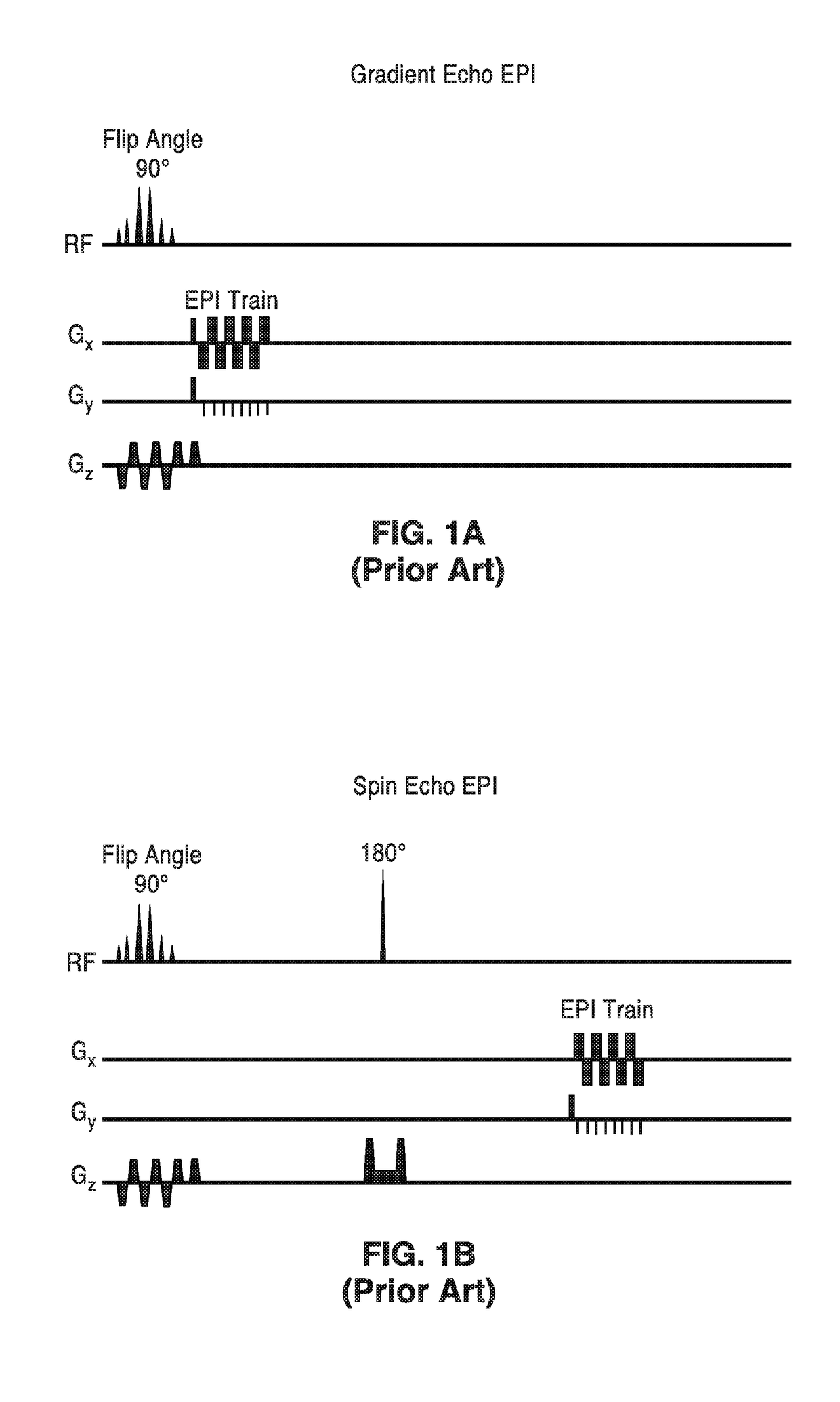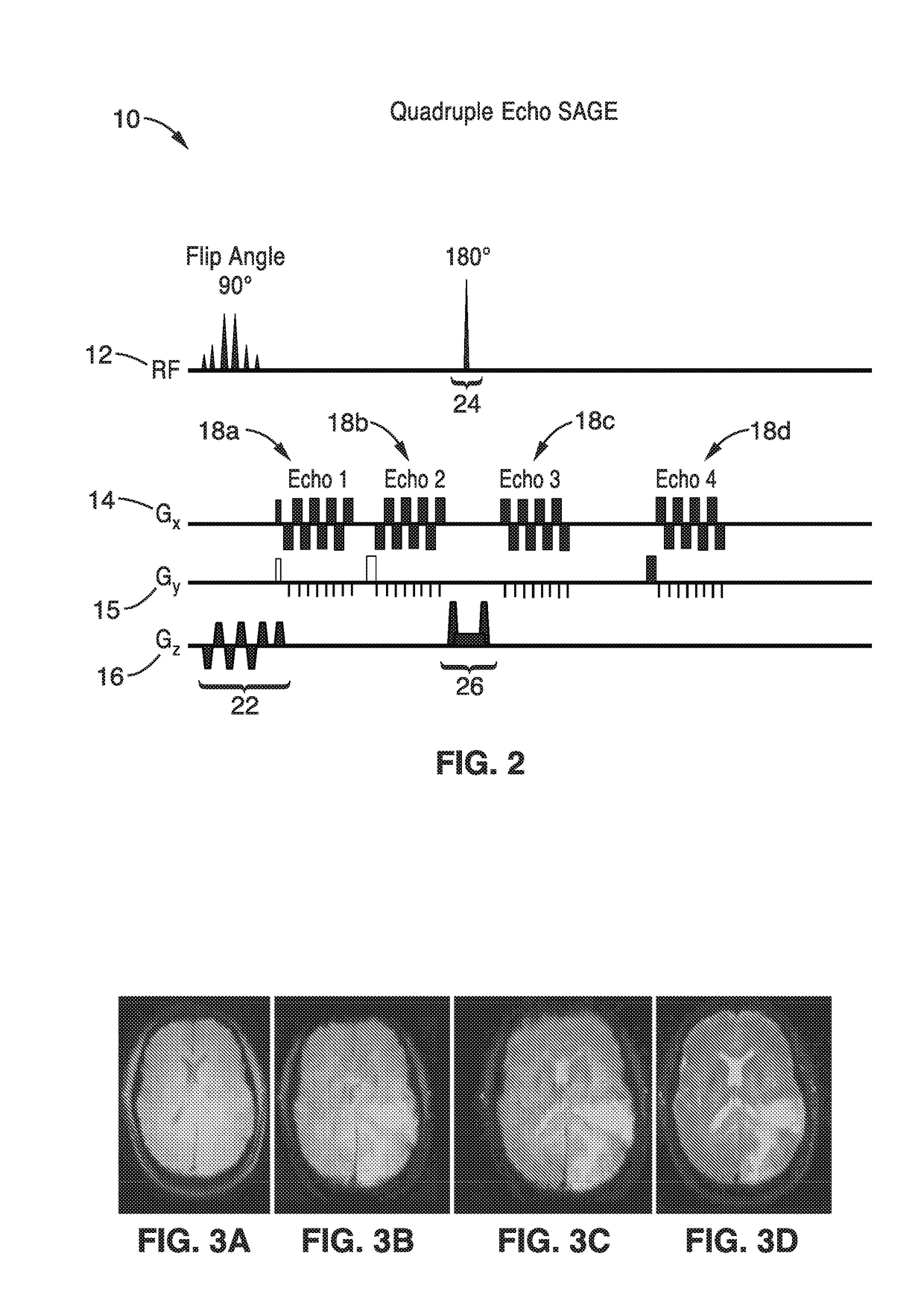Multi-Echo Spin-, Asymmetric Spin-, and Gradient-Echo Echo-Planar Imaging MRI Pulse Sequence
- Summary
- Abstract
- Description
- Claims
- Application Information
AI Technical Summary
Benefits of technology
Problems solved by technology
Method used
Image
Examples
Embodiment Construction
[0031]1. Introduction.
[0032]A quadruple echo gradient and spin echo EPI sequence is disclosed which provides numerous benefits. This spin echo technique can currently be performed at field strengths of 3T (Tesla) in humans, while it is expected that the techniques can be applied at other field strengths (e.g., lower or higher) in both humans and preclinical (animal) models.
[0033]2. Quadruple Echo Gradient and Spin Echo EPI Sequence.
[0034]FIG. 2 illustrates an example embodiment 10 of a quadruple echo gradient and spin echo EPI MRI pulse sequence using the RF pulse, Gx, Gy, and Gz gradient coils (elements 12, 14, and 16) which is a modified version of the spin echo EPI sequence. In particular, the number of acquired echoes has been increased from one echo train to four echo trains, with two echo trains between an excitation pulse (90°) (elements 20 and 22) and the refocusing pulse (180°) with spoiler gradient (elements 24 and 26) to achieve two gradient echo images (also called T2*-w...
PUM
 Login to view more
Login to view more Abstract
Description
Claims
Application Information
 Login to view more
Login to view more - R&D Engineer
- R&D Manager
- IP Professional
- Industry Leading Data Capabilities
- Powerful AI technology
- Patent DNA Extraction
Browse by: Latest US Patents, China's latest patents, Technical Efficacy Thesaurus, Application Domain, Technology Topic.
© 2024 PatSnap. All rights reserved.Legal|Privacy policy|Modern Slavery Act Transparency Statement|Sitemap



